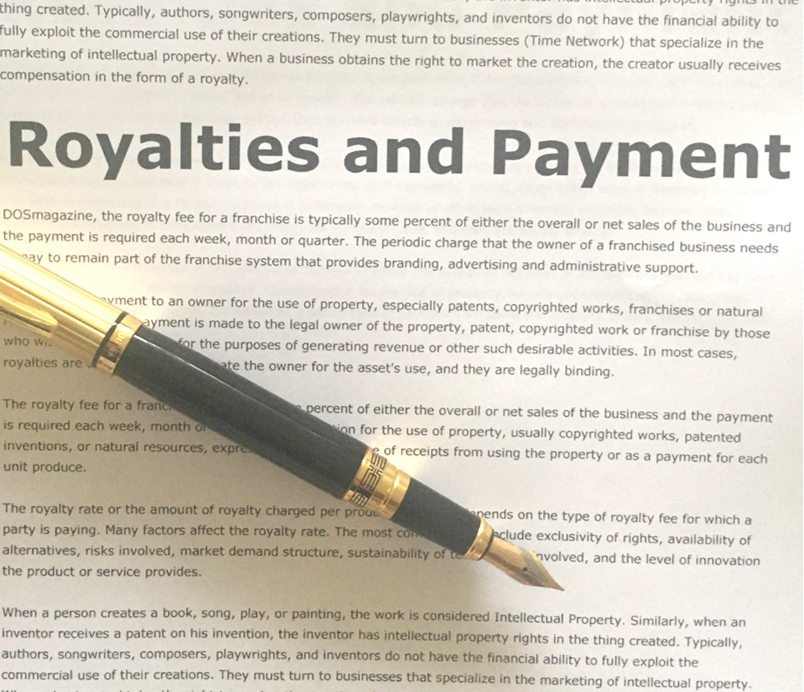Navigate quickly
A Break Down of Franchise Royalty Fees
When you first start your franchise you typically pay a franchise fee upfront. This will cover a variety of things that depend on the franchise you're dealing with, but often it will go towards initial training, marketing, and the rights to use the franchises logos, names, systems, and products. But that's not the only fee that franchisees will pay to a franchise. In addition to the initial franchise fees, the vast majority of franchises will charge their franchisees royalties that can come in one form or another. These royalties will often go towards ongoing training, sales of goods directly from franchisor to franchisee, and advertising and marketing efforts. The exact terms for these royalties are set out in your franchise agreement, but they come in a few common forms.
Royalty Types
Gross Sales:
These types of royalty agreements are setup so that the franchisee pays the franchisor some percentage of every dollar that they make in sales (minus things like taxes). This is one of the most common setups, because it gives an incentive for the franchisor to help the franchisee grow (since they make more money when the franchisee makes more money). They typically come in one of three forms:
Fixed Percentage:
The most common type of royalty agreement in the franchise industry. Under a fixed percentage royalty agreement the franchisee will pay a constant, set percentage of sales to the franchisor. It’s by far and away the simplest royalty structure, but it might not be the best option for either franchisee or franchisor in some cases.
Increasing Percentage:
Under this type of agreement the percentage of gross sales that a franchisee must pay to a franchisor will vary based on factors that impact the likelihood of a franchise to be successful. The typical factor for this is franchise location. A franchise located in a busy location where they are expected to have high levels of traffic would likely have higher fees under this model than a franchise in the middle of nowhere. Effectively this model allows franchisors to charge a premium to franchisees who want to open in prime locations.
Decreasing Percentage:
Despite having a name that’s almost the exact opposite of the last model they aren’t particularly similar. Under a decreasing percentage model the franchisee pays the franchisor less (percentage wise) if they are selling more. It’s viewed as a good option for both franchisee and franchisor by those who use it since it gives an incentive to the franchisees to grow and be more profitable, which is obviously a good outcome for the franchisors as well.
Transaction Based:
Some royalty agreements are based on things other than direct sales revenues. For industries that involve single larger scale transactions (often things like the hotel industry) royalties may be based on a set fee per transaction. These types of royalties are very similar to the fixed percentage royalties, but just take a slightly different form.
Fixed:
These types of set ups are simply a flat monthly fee for being a franchisee. This setup removes any level of risk for the franchisor, as they are guaranteed a certain amount of income every month. It can be risky for franchisees, as they are required to pay the fee even in bad times, but if they are successful they can keep a much higher proportion of the profit than under other models.
Minimum Royalty:
This royalty setup is used in conjunction with another form of royalty, typically a percentage royalty arrangement. It sets up a minimum amount that a franchisee must pay to the franchisor every month, even if their sales would not require that payment under the percentage royalty agreement. Like the fixed agreement it takes the risk out of the franchising agreement for the franchisor, but it places a large level of risk on the franchisee without as much potential for benefit.
No Fee:
These aren’t really royalty agreements, since they’re the complete absence of a royalty requirement. There are no required payments between franchisee and franchisor. To make up forthis franchisees operating under this type of agreement are typically required to buy certain types of goods or services from their franchisor.
Interested in opening your own franchise? Take our FREE franchise matching quiz to find the perfect franchise for you
Have any topics you would like me to cover in our blog? Email me at tim@franchisehelp.com
Ultimate franchising guide
All you need to know as a first time franchisee: Step by step guidance from experienced franchise professionals.

















